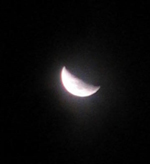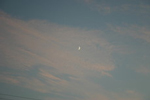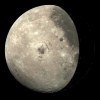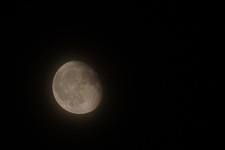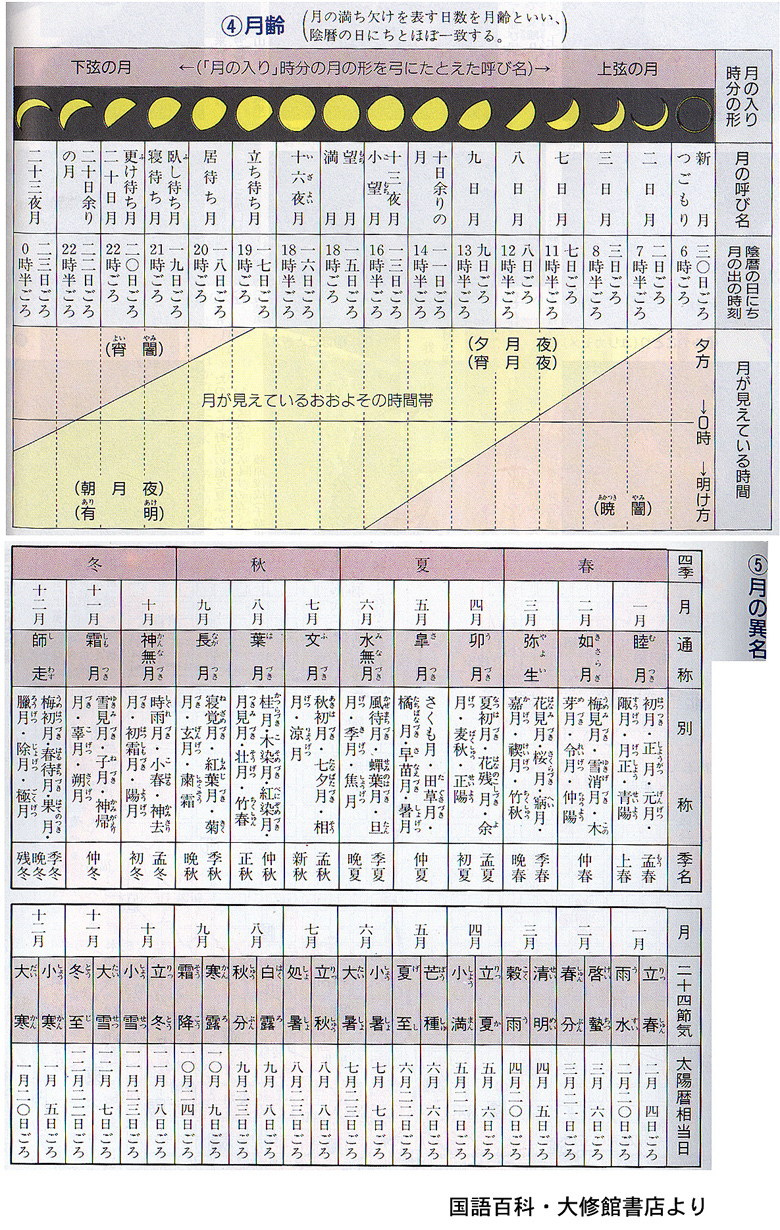Dawn Moon
Ariake no tsuki
有明の月 |
Ariake no tsuki, looking west over San Francisco bay, Aug 29, 2007, 6:03AM. The moon was full this month on Aug 28, 3:34AM, and the sun rose on this day at 6:37AM.
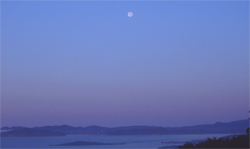
|
The ariake no tsuki (有明の月), literally "presence of moon at dawn". At the time of the full moon, the moon rises when the sun sets (since they are directly opposite each other) and of course sets when the sun rises. The moon falls behind the sun's transversal of the sky by about one hour each day and so on the next day it will be about one hour above its setting horizon when the sun comes up. Thus, when the sky begins to show dawn colors but before the actual sunrise, the moon will be low and bright near the western horizon. If we add another day or two, the moon is low in the horizon 2-3 hours before dawn, at the time when lovers are supposed to leave so as to preserve the privacy of the meeting. Since the streets may be unlit or poorly lit, good moonlight was very useful for pre-dawn, discreet departures. Thus it is that the moon, in a stretch of days just after the full moon, is the most useful for romantic trysts and had associated with it this romantic flavor. This moon is called the "ariake moon" and has positive nuances. It is not a specific time but rather those few days after the full moon when, in the very early morning hours, the sky begins to take on color and the moon is working its way towards the western horizon. (Of course the moon continues to be "ariake" — in the dawn sky — for longer than these few days but it is not beautifully near the horizon and has now waned to the point of providing less light for early secret departures.) |
